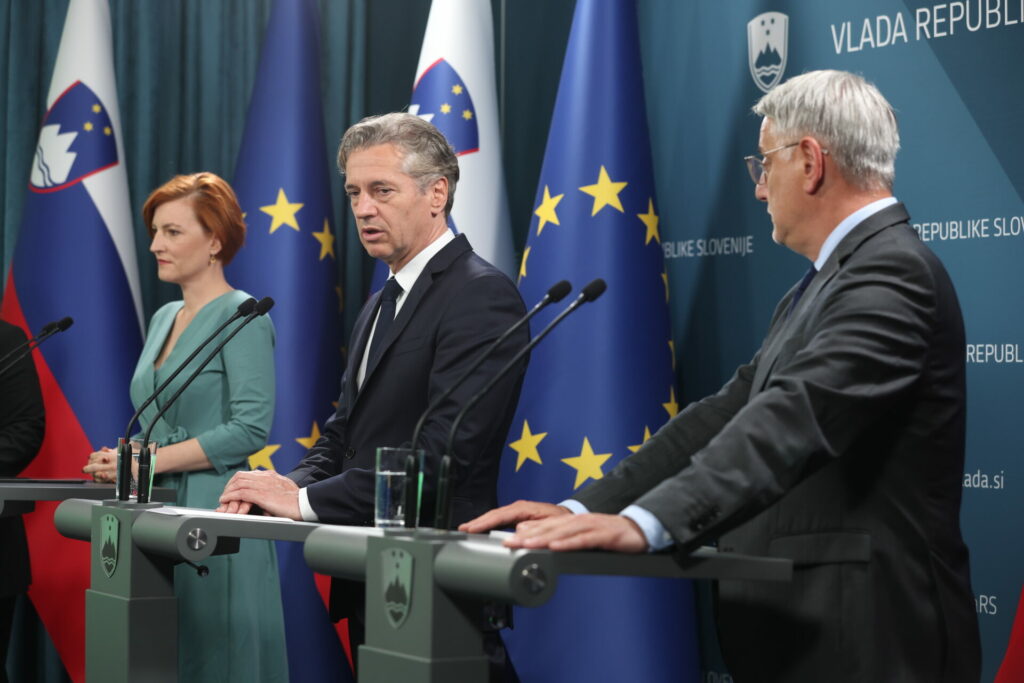Prime Minister Robert Golob, together with Minister of Culture Asta Vrečko and Minister of Labour, Family, Social Affairs and Equal Opportunities Luka Mesec, is at the bottom of the most recent ranking list of politicians, published on Sunday by the POP TV media outlet, and conducted by Mediana. When it comes to relations on the left, which is what this ranking shows in particular, a serious upheaval is indicated by the fact that the President of the Republic, Nataša Pirc Musar, the former mayor of Kočevje and now MEP, Vladimir Prebilič, as well as the President of the Social Democrats party (Socialni demokrati – SD), Matjaž Han, are at the very top.
Perhaps this is the reason for some of the recent nervousness in the media close to the ruling Freedom Movement party (Gibanje Svoboda). Among the parties, Vesna, the Green party (Vesna, zelena stranka), for which Vladimir Prebilič stood in the EU elections, is ahead of the Left party (Levica), but far behind the SD party. At the very top, however, remains Janez Janša‘s Slovenian Democratic Party (Slovenska demokratska stranka – SDS) – by a wide margin.
The bottom of the politicians’ rankings is as follows: Minister of Labour Luka Mesec ranked the lowest, right above him is Prime Minister Robert Golob, and before him is the Minister of Culture Asta Vrečko. Then we have (from the bottom up) MP Jelka Godec and another Minister of the Golob government, Alenka Bratušek.
And the top, where we can find the best-rated politicians, is as follows: the first on the list is President Nataša Pirc Musar, followed by MEP Vladimir Prebilič, the SD party President Matjaž Han, SDS MP Anže Logar, Speaker of the National Assembly Urška Klakočar Zupančič, Minister of Justice Andreja Katič, Minister of Finance Klemen Boštjančič, SDS MEP Romana Tomc, MP Jernej Vrtovec, and rounding out the top-ten list, we have the President of the SDS party, Janez Janša.
Mediana’s measurements of support for individual parties do not bring any particularly surprising results. The SDS party is still far ahead of the Freedom Movement party, and support for the SD party has improved slightly, which was previously pushed down by the courthouse affair. Among the small parties, only Vesna would make it to the National Assembly this time, while all the others are relatively far from the threshold. But the measurements, especially for the small parties, are imprecise and also by no means a prediction of the electoral outcome. Even the measurements published in the week before the elections are not necessarily a predictor of the actual outcome, as was demonstrated at the last European elections, when Mediana and Ninamedia completely missed how decisively the SDS party would win the elections.
A longer-term view for the big five parties shows that the SDS party has taken over the role that the Freedom Movement played in the elections. The Freedom Movement’s losses, which would be even more extensive if we were to take into account that after the elections, the List of Marjan Šarec (Lista Marjana Šarca – LMŠ) and the Party of Alenka Bratušek (Stranka Alenke Bratušek – SAB) merged into this party, were not “capitalised” on by the New Slovenia party (Nova Slovenija – NSi), which is led by Matej Tonin, which after the elections to the National Assembly decided to take the unusual tactic of making deals with the ruling Freedom Movement and the government coalition against the SDS party and took over the two commissions in charge of the opposition’s control of the government. The unusual behaviour, however, has not been particularly helpful to the said party so far.
The SDS party, in particular, and to some extent the SD party, have strengthened their position.
In the graphs and the article in the Online Journal (Spletni časopis), the shares of support for the parties are recalculated to take into account only the voters who have identified the party they would vote for. This allows comparisons to be made with elections and between surveys. We also count the choice of the “other” parties among the identified voters. These are generally those that are not offered to the respondents but that they themselves name. The original proportions of support for the parties in the different surveys, as published by the aforementioned media, still show that the SDA party has the most support, followed by the Freedom Movement and the NSi parties.
I provide all the data underlying the recalculations because this makes it easier to understand the differences between the measurements and also to check if there may have been errors in the transmission and processing of the data.
Peter Jančič, Spletni časopis


